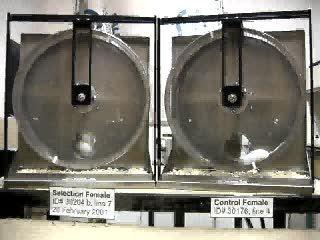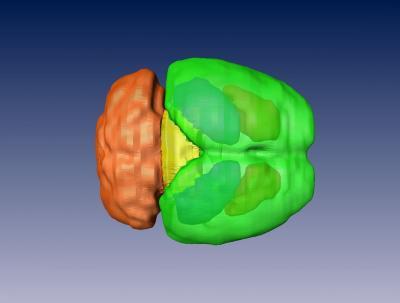The researchers found that compared to regular mice, those mice that had been selectively bred for high voluntary wheel-running had significantly greater midbrain volume as well as larger non-cerebellar brain mass, but not larger cerebella or total brain mass.
The primary question the researchers sought to answer in their study is whether selection on a particular behavioral trait, such as voluntary exercise, using an experimental evolution paradigm, has resulted in a change in brain size. An additional question they posed is whether any change in brain size involves the entire brain or is "mosaic," that is, involving only a section or some sections of the brain.
"Our finding that mice bred for high levels of voluntary exercise have an enlarged non-cerebellar brain mass and an enlarged midbrain, but do not show a statistically significant increase in overall brain mass or volume supports the mosaic theory of brain evolution," Garland said.
What implications the current research has for humans is not immediately clear.
"It is possible that individual differences in the propensity or ability for exercise in humans are associated with individual differences in the size of the midbrain, but no one has studied that," Garland said. "If it were possible to take MRIs of babies' midbrains before these babies started 'exercising' and then follow these babies through life, it may be that inherent, genetically-based differences in midbrain size detected soon after birth will influence how much they would be likely to exercise as adults."

This movie shows running mice (bred-for-athleticism mouse on the left, regular mouse on the right).
(Photo Credit: Garland Lab, UC Riverside.)

This image shows a 3-D reconstruction of a mouse brain based on magnetic resonance imaging (MRI). The forebrain is seen in green, the midbrain in yellow and the cerebellum in orange. The forebrain region has been made partially transparent to show the underlying regions (from left to right, the hippocampus and caudate).
(Photo Credit: Garland Lab, UC Riverside.)